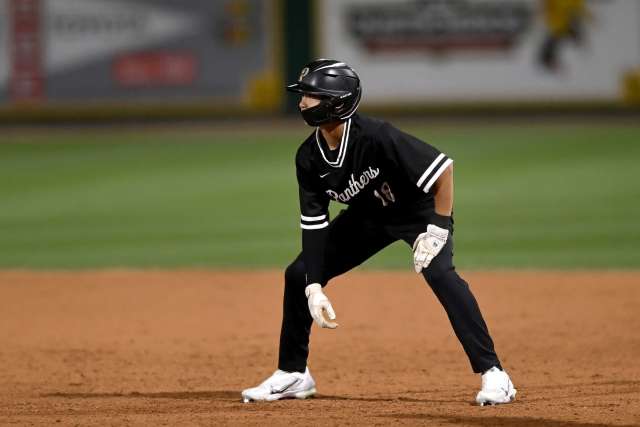Sei Nagashima was an ebullient 4-year-old enjoying his first day of preschool in Porter Ranch when a plastic swing hit him lightly on his left eye. By the time his parents arrived to pick him up, the scratch had become a bruise that soon blossomed into a black eye.
Taku and Quyen Nagashima, Sei’s parents, immediately took him to a doctor, who checked the boy’s vision, determined the injury to be “a bruise” and sent the family on their way.

The Nagashimas did not know at the time, back in summer 2011, but the episode would begin a long, often wearying journey through the realm of platelet counts and blood disorders.
Sei, who turns 16 on Aug. 14, was eventually diagnosed with chronic immune thrombocytopenia, or ITP, a rare autoimmune condition characterized by low platelet count. ITP can cause severe bruising and bleeding.
Over the years, however, something remarkable happened with Sei. His platelet count began to stabilize at a level that allows him, with careful monitoring and plenty of protective gear, to play baseball and football — sports in which errant hardballs or hard tackles could spell trouble.
He also carefully practices jujitsu, a martial art that employs holds, throws and blows to subdue opponents.
“ITP is a normal part of my life now,” Sei said in a recent interview. “It doesn’t hold me back. I don’t think about it. My approach is that I have to handle this and watch out for myself.”
Common manifestations of ITP, first identified in children in the 1700s, include easy bruising, bleeding (including nosebleeds) and pinpoint-size reddish-purple spots on the lower legs known as petechiae. Bleeding can happen inside the body, beneath the skin or on the skin’s surface.
Each year in the United States, ITP afflicts between 1 and 6 new patients per 100,000 people. The prevalence is 8 per 100,000 children and 12 per 100,000 adults. The disease is more prevalent among adults older than 60 because they more often develop the chronic form.
Childhood full of treatments
As a little boy, Sei endured frequent bruising and blood tests and had to forgo activities such as skateboarding and cycling.
When Sei was 6, the family moved to Rancho Palos Verdes. The new family doctor tending to Sei and his two siblings asked whether the parents had concerns. They related Sei’s history of bruising.
“Let’s get to the bottom of this and order a blood test,” the doctor said. When the results came in, she referred them to a pediatric hematology oncologist at a children’s hospital in Long Beach. He suggested they take a conservative approach and forgo the medication infusions that some other doctors advocated for patients with ITP.
Sei continued to receive care at the Long Beach hospital before transferring to UCLA Health in 2019 when the family’s insurance coverage changed.
Throughout his treatment, Sei’s parents kept a robust file of medical reports in case teachers or school administrators ever suspected them of physically abusing him.

“Sei has been blessed with a mild to moderate case of chronic ITP,” said Satiro Nakamura De Oliveira, MD, a pediatrician and pediatric hematology oncologist who has treated Sei since 2021. “He never had severe manifestations. His platelet counts are not so low anymore. They’re never completely normal, but 50,000 to 80,000 are enough to prevent the clinical manifestations.”
Platelets are tiny particles in the blood, produced in bone marrow from larger cells, that aid with clotting. A normal platelet count ranges from 150,000 to 450,000 platelets per microliter of blood.
In years past, Sei’s platelet count could dip to 30,000 to 50,000, or even a frightening 14,000 to 18,000. The count has never been robust, but his current counts of 50,000 to 80,000 make his condition manageable, Dr. De Oliveira said.
In March, after noticing petechiae on his ankles, Sei went to an urgent care center, where he received a diagnosis of asymptomatic mononucleosis. The Nagashimas’ UCLA Health family doctor ordered a blood test, which showed a low platelet count. Sei next saw Dr. De Oliveira, who predicted, correctly, that the platelet count would go up as Sei’s body created antibodies to battle the mono.
Because of the uncertainty, Sei sat out the beginning of baseball season at Palos Verdes Peninsula High School in Rolling Hills Estates. Once the platelet count rose to 180,000, Sei was back in the game.
Although there is no cure for chronic ITP, Dr. Oliveira said, medications are in development. Steroids can be helpful, and Sei took a round of those early on.
In some cases, doctors remove the spleen. In healthy people, the spleen helps to maintain a robust immune system and clean the blood of foreign matter. In patients with ITP, the spleen tends to destroy platelets and produce anti-platelet antibodies. A splenectomy usually increases the platelet count. Although splenectomy was long a standard procedure for patients with chronic ITP, many doctors are now prescribing monoclonal antibody treatments and drugs known as thrombopoietin receptor agonists, or TPO-RAs, that successfully produce mature platelets. Doctors typically delay the decision to perform a splenectomy until late in the disease’s course.
Handled with grace
Youngsters with ITP who are warned away from beloved activities might suffer psychologically because of the physical restrictions.
“Some completely rebel against it and go against medical advice and try to do skateboarding and get into fights,” Dr. De Oliveira said.
Sei, who has grown accustomed to quarterly blood tests, has managed his condition with grace and maturity, he added. He is especially watchful for petechiae on his ankles, a sign that platelets are dropping and that he should head to urgent care for a blood test.
“Sei has always been very cheerful,” Dr. De Oliveira said. “By now, he and his dad know about the disease. They know what they are up against. The main point of this is education and self-awareness. … They’ve always adjusted to routine. At the start of football season, we check his platelet counts so that he can go all in.”
‘A kid with a mission’
And going all in is the style for Sei, a talented 5-foot-9, 150-pound athlete who will soon be a sophomore.

For football practice and games, he “pads up,” wearing extra protection on his elbows, wrists and ribs to play cornerback. When he had to sit out for a time because of low counts, he patiently explained his blood disorder to his concerned teammates.
During baseball season, Sei plays outfield to minimize the risks of being bonked in the head by a ball or spiked by a base stealer’s cleats.
“Sei never shows any limitations when it comes to competing,” said David Young, Peninsula High School’s head football coach. “He is very versatile. He’s tops in conditioning and strength conditioning. Sei is a ‘Yes, coach; no, coach’ type of kid. He’s very driven. He’s a kid with a mission.”
As Sei has gotten older, he has embraced the idea of taking more responsibility for his health.
“Sei is starting to read and learn more about ITP,” Taku Nagashima said. “He’s more interested in what ails him.”
That extends to research about foods and supplements. After a low-platelet-count scare during the last baseball season, he began taking vitamin B-12. He downs spinach and other greens by the bowlful.
Taku Nagashima, a talent agent, often learns from his longtime friend and client Shawn Stockman, a member of Boyz II Men, an enduring vocal harmony group known for R&B and soul. Sei and his older brother, Kai, and younger sister, Lei, call him “Uncle Shawn.”
One of Stockman’s sons was diagnosed years ago with autism. As a result, Stockman well understands what it’s like to deal with a chronic condition in a beloved offspring.

“When something is affecting family,” Stockman said, “we’re all affected. We keep each other up by supporting each other. We both understand as fathers our roles and how we have to make our sons’ lives better.”
Taku and Sei Nagashima said they were eager to share their story in the hope that their happy outcome might bolster other young ones with chronic issues.
“For kids growing up in the Los Angeles area, sports are a big part of the educational culture,” Taku Nagashima said. “We know that if you learn about blood disorders and understand what you’re dealing with, you can go on with your daily life and sports. We want to show this is not the end of the world. You can do what you need to do.”
Martha Groves is the author of this article.




